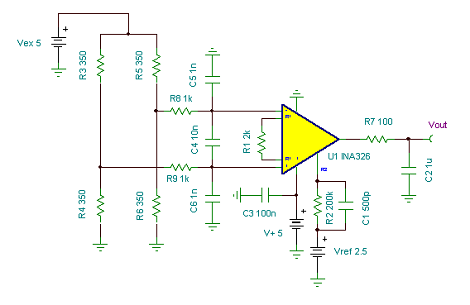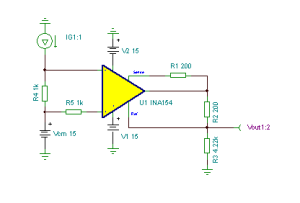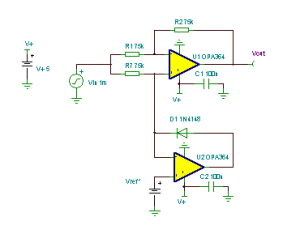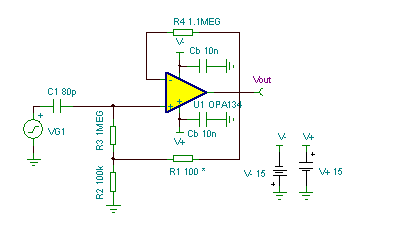Bridge Sensor Amplifier With RFI Filter
This high accuracy bridge sensor amplifier is based on the autozero INA326 instrumentation amplifier. Bridge sensors are commonly found in pressure transducers, weigh scales, strain guages, and load cells. As shown, the amplifier gain is 200V/V. Capacitors C1 & C2 form a 2nd order 1kHz low- pass filter to reduce noise. The INA326 is virtually free of 1/f noise. R8 & R9 together with C4, C5, & C6 form an RFI filter. For best filtering, make R8 = R9 and C5 = C6 as close as possible. C4 = C5 * 10. In battery- operated applications, an INA327 with shutdown is recommended. For operation over -40C to +125C, use an INA337. (Circuit is created by Neil P. Albaugh, TI-Tucson)
The “Bridge Sensor Amplifier With RFI Filter” circuit:

Online Simulation of the “Bridge Sensor Amplifier With RFI Filter” Circuit
The great feature of the TINA circuit simulator that you can analyze this circuit immediately with TINACloud the online version of TINA. Of course you can also run this circuit in the off-line version of TINA.
Click here to invoke TINACloud and analyze the circuit, or watch our tutorial video!
You can send this link to any TINACloud customers and they can immediatelly load it by a single click and then run using TINACloud.
Michael Koltai
www.tina.com




